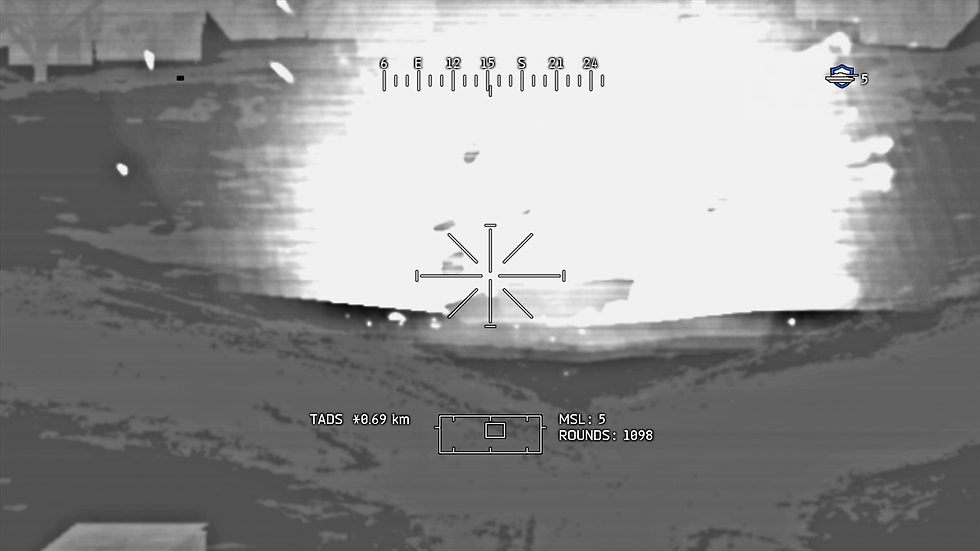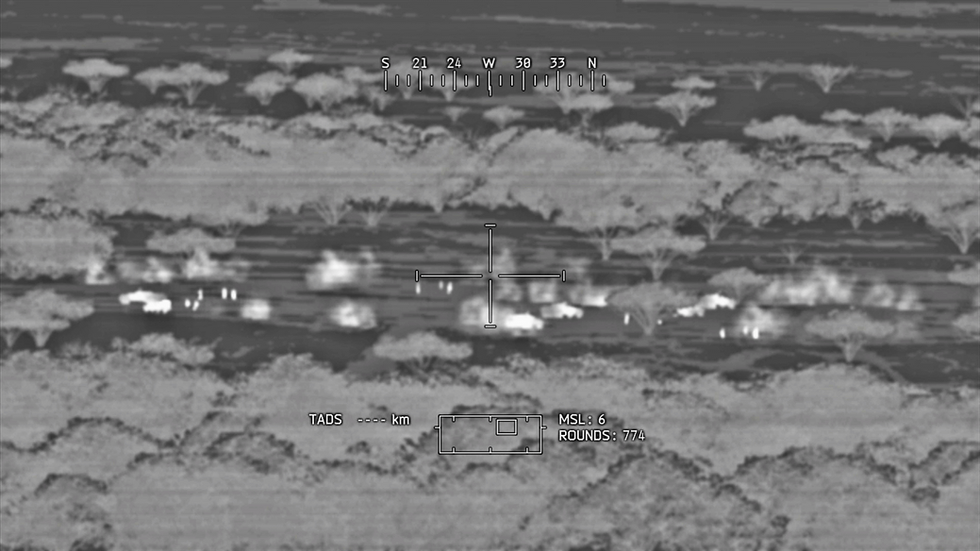A reasonable representation of real world combat systems

This is going to sound crazy, but there once was a time War Thunder did not exist. Gaijin Entertainment wasn't always the purveyor of free-to-play, 2000+ vehicle tech tree, combined arms combat. The developer created three combat flight simulators four years before the introduction of War Thunder. Of them, Apache: Air Assault was their only modern-day combat title. It focused on the Boeing AH-64D Apache Longbow and provided a reasonable portrayal of the aircraft and believable scenarios in which an attack helicopter would operate.
The AH-64D is built on the Apache's already ground-breaking performance and innovation, with its centerpiece being the AN/APG-78 Longbow Radar. With the ability to track up to 128 targets and fire upon sixteen at once, now paired with its already formidable Target Acquisition and Designation Sights (TADS), the Apache Longbow became even more formidable. In Apache: Air Assault, this aircraft's ranged attack capabilities are displayed in a simplified but well-represented way.

The game is firmly a flight arcade title, but not to the extent of its fixed-wing fighter-based contemporaries. One or two well-placed MANPADS or unguided rockets can bring the player's aircraft down. Harder difficulties remove beginner-friendly flight restrictions, resupplying mid-mission at forward arming and refueling points is more important, and a minimal Heads Up Display (HUD) user interface notably increases the quality of gameplay for experienced flight simmers. But most importantly for this article, the onboard loadouts and weapon capabilities were grounded in reality. Whether it's a more standard load of a few dozen rockets, eight Hellfires, and chain gun or a full missile-slinging loadout of sixteen air-to-ground missiles, the number of weapons onboard is nothing like the 80+ missiles found in other games.

UAV Teaming
In-game, the Apache can connect to unmanned aerial vehicles (UAVs). The UAVs provide limited real-time camera feeds. They provide top-down views of a target being tracked by the attack helicopter. While the UAVs cannot be used to find yet-to-be-identified targets, their camera feeds can assist in pre-planning attacks. Seeing that an emplaced target may be surrounded by obstructions or still unseen defenders could prompt the helicopter to reposition before attacking. There is a limited ability to swivel the UAV cameras and zoom in, but nothing beyond that.

Longbow Radar Supported Engagements
While flying in third person, pilot view, gunner view, or HUD camera views, players can cycle through the ground, naval and airborne vehicles using their Longbow Radar. The targets can be tracked either individually, or up to sixteen static or moving targets can be designated for a simultaneous blow. Even with automatic midair weapon resupply available in easier difficulties, dumping all missiles onto a cluster of lower-threat targets results in either a flight back to the nearest FARP or waiting many minutes for resupply. Players instinctually begin reserving Hellfires for higher threat targets like armored vehicles, air defenses, or even speed boats toting MANPADS. Any Hellfire launched using this method is essentially fire-and-forget, with the radar guiding the missile.

Direct View Optics and FLIR
The most well-known camera to anyone familiar with combat aviation. While players fly the aircraft, the 30mm M230 chain gun is controlled by the AI gunner as they automatically scan and engage threats at short range. Longer distance engagements must be done by the player taking manual control of it with Direct View Optics (DVO). DVO consists of a black-and-white daytime camera and white hot Forward Looking Infrared (FLIR). Optics can gradually zoom with decreasing image clarity the more it zooms in. Getting familiar with the shapes of common weapons and vehicles helps greatly. Furthermore, frequently using FLIR to scan the terrain or areas hostile forces may inhabit can help spot ambushes or targets of opportunity before they detect the player.
When firing from a distance or while the AH-64D has any movement, players must manually lead targets, correct for the aircraft's flight path, and cannon shell drop over distance.
While using DVO, players can enable an automatic hovering mode or manually fly the aircraft. However, flying while in DVO does not give aircraft altitude, attitude, or bearing indicators like targeting pods carried by fixed-wing combat aircraft. Flying the aircraft like this greatly increases the chance of a controlled flight into terrain. Practicing small control inputs and remembering the aircraft's flight path before entering DVO is necessary if firing while on the move.
Hellfire missiles are launched with laser guidance while in DVO. The crosshair of the chain gun acts as the crosshair of the guidance laser for the missiles. The Hellfires loft shortly after leaving the Apache with a time until impact displayed. When fully zoomed out, the missile can be seen in flight. The benefit of launching with manual guidance is the ability to hit clusters of soft targets like infantry or groups of light vehicles.

What the Gaijin Entertainment of long ago gave us in Apache: Air Assault isn't anywhere near the full fidelity AH-64 brought to Digital Combat Simulator, but it's a noteworthy representation that captures a bit of the "real thing" in a genre that prides itself on the rule of cool trumping any inkling of simulation. While the game will inevitably draw you into multiple action packed close ranged engagements, patiently using FLIR, zoom optics, radar and Hellfires in combination can thin out even the toughest groups of hostiles before the rolling gun battle begins.
About the Writer
Aaron "Ribbon-Blue" Mendoza

Co-founder of Skyward Flight Media. After founding Electrosphere.info, the first English Ace Combat database, he has been involved in creating flight game-related websites, communities, and events since 2005. He explores past and present flight games and simulators with his extensive collection of game consoles and computers. Read Staff Profile.


















.png)